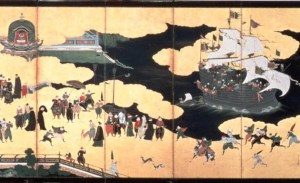Noodles for ramen are often made with wheat, flour, salt, water, and an ingredient called kansui, an alkaline water that gives the noodles a chewy texture. The noodles are classified into: fresh, dry and instant.
Fresh noodles: They are used in high-end ramen shops, are made from scratch, and have a stronger, more authentic taste compared to other types of noodles. Tonkotsu ramen is generally paired with straight noodles, while miso ramen is almost always paired with wavy noodles. Shoyu ramen can be mixed with any noodle from the region.
Dry noodles: they are great for making ramen at home. They are sometimes used in Japanese restaurants, but are usually found in ramen packages in supermarkets. These have a bit more texture and oily taste compared to fresh noodles. Consumption is subject to personal preference.
Instant noodles: These were invented by Momofuku Ando in 1958. They are easy to make, with little time and effort. But it is not recommended to consume it in excess.
Even though many people consider that the most important thing in ramen is the noodle, another way to differentiate the style of ramen is by the soup in which the noodles are served. The most characteristic are:
Shoyu (soy sauce): Considered the most emblematic of Japan. It is made up of chicken, to which a couple of tablespoons of thick soy sauce is added when served. Traditionally, rayu (red pepper extract with sesame oil) is added afterwards to taste.
Tonkotsu (pork bones): Particularly popular around Kyushu, tonkotsu ramen is made from pork bones that have been boiled until they dissolve in a cloudy white broth. The thick, creamy soup is also often seasoned with chicken broth and pork fat. It is one of the most common.
Miso: Created in Sapporo in 1955. It is generally prepared with chicken and mixed with a variety of miso when served. In Kanto it is common to add a tablespoon of butter.
Shio (salt): The simplest of all the varieties and in which the greatest Chinese influence is felt. It is considered very popular in Hokkaido. The soup is transparent and its flavor is more direct.
The soup can be oily or lean, the noodles thick or thin and can be taken from the soup in a bowl or dipped in the soup on the side. While the essence of authentic ramen may be in the broth, the ingredients are crucial in making ramen the most important of all Japanese noodle dishes. Here are the most popular ramen ingredients:
Nori: Also known as seaweed, it is often cut into crisp strips and placed next to the ramen bowl.
Chashu: They are pieces of sliced pork seasoned with soy sauce.
Seasoned boiled eggs: varies depending on the type of ramen. For example, tonkotsu ramen is usually served with a hard-boiled egg. The egg provides a rich accent that is part of an authentic ramen experience.
Kamaboko: sometimes also called Narutomaki, it is a small portion of fish paste formed with a pink whirlpool symbol.
Chives: When freshly sprinkled on top of the ramen, the chives give off an invigorating natural aroma that complements the deep richness of the soup base.
Menma: they are basically aromatic bamboo shoots. They have a very intense flavor.
Bean sprouts: they are also served, recently, over ramen. When soaked in the soup they absorb its flavor and have the added benefit of increasing the total amount of food you consume, making your Japanese ramen experience, along with the taste, last much longer.
Corn: Although not essential, corn adds a very nice special flavor when mixed into any ramen broth, usually served with tonkotsu broth.
Butter: this ingredient makes the soup even creamier. With just a touch of butter, ramen turns into a delicious stew.
When you go to a ramen restaurant in Japan, you have two ways to pay: one, buy a ticket at a machine, and the other, pay at the cash register. If there is a vending machine of tickets: they are located next to the entrance, and there you can buy it. Everything from ramen to garnishes to garnishes has its button on the machine, so make sure to pick up the tickets of what has been ordered. After obtaining them, he gives them to an employee. Many places only have Japanese-language machines. If you need help when you arrive at a restaurant, it is recommended to ask an employee.
If you pay at the cash register: After you are seated, you order from the table. You pay after you eat, so when you’re ready to go, stop at the cash register first. Sometimes a check will be left on the table, and in those cases, you have to take it with you to deliver it to the cashier.
Ramen is undoubtedly one of Japan’s favorite and iconic foods. All the people who travel to the country of the rising sun, at the end of the visit finally discover their favorite style.
Ramen, more than a meal, is an experience that is recommended to try when you travel to Japan.

